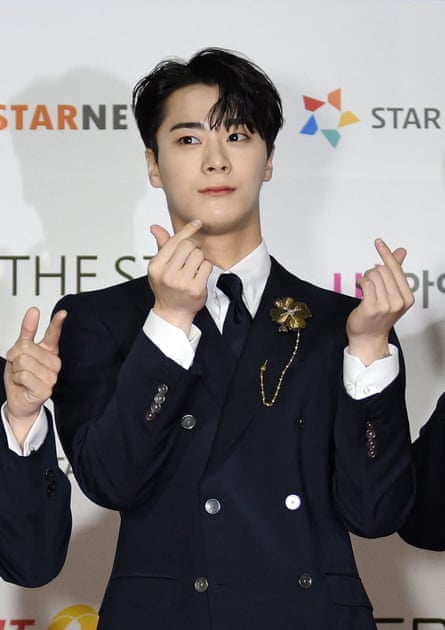Before I moved to South Korea, 12 years ago, I hadn’t really come across suicide in my social life. Now, every year I hear of friends, or friends of friends, taking their own lives. The recent suspected suicide of K-pop star Moonbin has focused minds yet again on this problem – one which is far from limited to the entertainment industry, but is a full-blown social crisis affecting Koreans of all ages and backgrounds. However, it is young people in particular who are bearing the brunt.
So what is going on?
Korea, after all, is a dynamic country whose global reputation is remarkably positive. It has made from the behemoth that is K-pop and its film industry, to its innovative skincare products that have revolutionised the beauty business. These achievements have solidified South Korea’s reputation as a cultural powerhouse and global trendsetter.

Yet beneath the facade lies a mental health crisis of grave proportions. In 2021, South Korea recorded a suicide rate of 26 per 100,000 people, the highest among OECD countries. Suicide was the main cause of death for those aged 10 to 39, with 44% of teenage deaths and 56.8% of deaths of those in their 20s attributed to it. Mental illness was identified as the leading cause of suicide.
I have seen this crisis with my own eyes. Many of my closest friends have struggled with suicidal thoughts and depression. They often cite societal pressures to succeed, feelings of isolation, worthlessness and discrimination for not conforming or being different. It’s a conversation that’s become all too familiar and many of my peers are seeking psychological help, albeit discreetly. While more people speak openly about mental health than they used to, the topic still remains taboo and is often seen as a personal weakness or failure.
Suicide in the entertainment industry is just one manifestation of the constant pressure and stress that young people face in a hyper-competitive society. In the case of Moonbin, in a live chat just days before his passing, the singer with the group Astro said, “I’ve chosen this job, so I need to handle it”. Police found no signs of foul play, and suspect he died by suicide.
However, the crisis is not confined to K-entertainment and there are no shortage of daily headlines about people making “extreme choices”, a euphemism for ending one’s life. This includes schoolchildren – factors such as academic pressure and bullying are cited as explanations.
This month, three teenagers fell to their deaths from high-rise buildings within five days of each other in Seoul’s affluent Gangnam district. Although the factors at play will be complex and varied, the place is known for its high concentration of elite schools and expensive private “cram schools”.
In the hope of securing bright futures for their children, many parents throw them into an intensive education system, which takes precedence over socialisation and wellbeing. This obsession stems from the highly competitive job market, where good grades and a prestigious university degree are seen as necessary for obtaining stable and well-paid employment. The result is that the vast majority of children, some as young as two, are sent to cram schools on top of regular schooling.
Here’s the thing: South Korea is a deeply unhappy country. Having written a book on the topic, I’ve explored how South Korean culture places strong emphases on both conformity and competition, a contradiction that can generate stress, isolation, suppressed emotions, and deep dissatisfaction.
Recently, the government announced its aim to reduce the country’s suicide rate by almost 30% within five years, and to shorten the gap between mandatory mental health checkups from 10 years to two.
Not all mental health treatments are covered by national insurance, which makes it difficult for people to access mental health services. Private counselling and therapy sessions can be expensive. This financial burden can be especially challenging for those who require ongoing counselling or therapy for conditions such as depression. Help centres and helplines also exist and are playing an important role, but these are mainly reactive measures to address mental health issues after they have developed.
I once tutored a seven-year-old in English. She did not get to bed until 10pm each day because of all her extra tuition and CV-embellishing activities. During my lessons, she tended to fall asleep. She was anything but happy. I felt terrible contributing to her misery, and quit.
As South Korea continues to dazzle with its outward image of perfection, the glaring paradox at home can no longer be overlooked. It’s time to break the cycle of competition and conformity and create a society that values compassion and individuality. Above all, policymakers need to restore hope in citizens that South Korea is a place where they can simply be happy.
-
Raphael Rashid is a Seoul-based freelance journalist and author of The Korea We Refuse to See
-
International helplines can be found at www.befrienders.org. In the UK and Ireland, Samaritans can be contacted on 116 123 or email jo@samaritans.org or jo@samaritans.ie. In the US, the National Suicide Prevention Lifeline is at 800-273-8255 or chat for support. You can also text HOME to 741741 to connect with a crisis text line counselor. In Australia, the crisis support service Lifeline is 13 11 14.
-
Do you have an opinion on the issues raised in this article? If you would like to submit a response of up to 300 words by email to be considered for publication in our letters section, please click here.
"behind" - Google News
April 29, 2023 at 03:31PM
https://ift.tt/tqVnezc
South Korea may look perfect, but behind the facade lies a devastating suicide crisis - The Guardian
"behind" - Google News
https://ift.tt/BWpA0HQ
https://ift.tt/wHkVG0m
Bagikan Berita Ini














0 Response to "South Korea may look perfect, but behind the facade lies a devastating suicide crisis - The Guardian"
Post a Comment